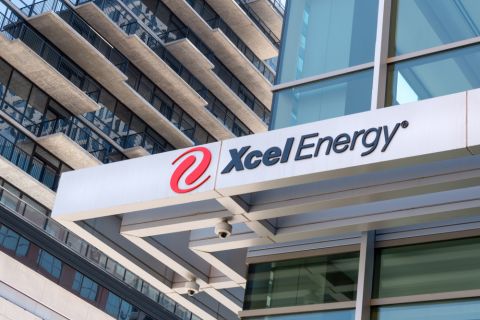Senior secured energy lenders say they are preparing to finance the smallest of independents, which are expected to begin buying assets from their larger peers this year, as the latter enlarge their portfolios with assets from the majors, which are expected to begin divesting large properties in 2003. Two commercial banks have started energy-lending departments that plan to specialize in the under-$5-million range, and an Oklahoma bank that makes similar-sized deals is expanding to target Texas-based independents. These banks smell opportunity, as each cite the recent spate of bank consolidations. "Most banks won't look at loans this small. It is too expensive for larger banks to make those size of loans because their overhead is too high," says Ed Henry, president and chief executive of Abrams Centre National Bank, Dallas. Bob Holmes, senior vice president, Americrest Bank, Oklahoma City, agrees. He is also looking for the smallest of customers. "Everyone loves booking a $5- to $10-million loan, including us, but we also love our smaller customers in the $100,000-to-$500,000 category and who value a strong, personalized banking relationship." Dan Steele, senior vice president, Sterling Bank, Houston, felt so strongly about this that he agreed to leave Comerica Bank to help Sterling start an energy-lending effort. "So many of the larger organizations have retreated from the smaller transactions," he says. "Sterling believes these smaller transactions are excellent growth vehicles." Following is a look at what each bank has to offer. Sterling Bank Houston-based Sterling Bank has kicked off its new reserve-based energy-lending department, with a preferred deal size of $1- to $15 million. The bank intends to establish its market presence by assembling an experienced staff and utilizing a competitive price deck. "The bank has made a substantial investment in resources and manpower and the bank's senior management views this investment as a long-term commitment to providing capital for the smaller independents," says Steele. He's counting on increased oil-industry acquisitions and divestitures to result in more demand for loans-from buyers needing to finance their purchases. "It has been hard for buyers and sellers to agree on a middle ground. Product prices have been favorable to the producers; therefore, it has become increasing difficult to find willing buyers who are comfortable paying current prices for reserves in the ground. "This high-price environment provides little motivation for a producer to sell since he is generally content to realize greater cash flows in the strong price environment. This trend is consistent with the mergers and acquisition markets where activity levels are considerably less than prior years." With product prices stabilizing, buyer and seller should be able to come to an agreement on pricing. "I never thought there would be a day when high product prices would impact the capital markets like they have. Acquisition financing is what provides growth opportunities for most energy banks. Since acquisitions among small and midsize companies was limited in 2002, many banks were challenged to increase their outstanding loans." With less new-deal volume, energy lenders were affected in two areas, Steele says. A lack of new deals slowed loan-portfolio growth and, with increased cash flow from $27 oil and $3-or-better gas prices, loan customers were paying off their existing debt to create dry powder for future acquisitions. The bulk of Sterling's lending will be primarily for acquisitions although, if a company has adequate unencumbered producing reserves, Sterling will consider using these reserves to finance exploration programs. "We intend to include nonproducing reserves in our collateral value calculations. Loan values for nonproducing reserves will probably range from 20% to 25% of the bank's projected loan value," says Steele. Abrams Centre National Bank Dallas-based Abrams has also begun making energy-related loans of $400,000 to $5 million. It has done deals so far totaling $2.5 million at prime plus 1% to 2%, and was looking at seven more deals at press time. "We really do not have a standard or fixed price deck. The pricing is based on current commodity prices with modifications for the direction of prices but price decks will be competitive," says Toby Engleman, vice president, energy lending. Abrams is lending to energy companies with reserves in Texas, California and Oklahoma. Ed Henry, president and chief executive officer, says, "We have several production loans totaling $2 million to an out-of-state company with reserves in Texas and California. We also have a Dallas customer with assets in Oklahoma. We feel we are unique because one of our oil and gas lenders, Toby [Engleman], is an engineer and one of our board members is an independent engineer. Those two look at and analyze each deal that comes through the door." The bank believes there will be many energy-lending opportunities this year. "2003 should be a very active year, especially in gas-based lending," says Henry. The bank has not made loans yet to service companies. "We only lend on proved producing reserves with fixed pricing. We feel oil and gas can be the safest type of lending, based on the understanding of the reserves that serve as collateral and as the source of repayment." The bank makes term loans and lines of credit, typically for working capital on existing properties or acquisitions, according to Engleman. "Trying to get our name out will be key toward growth for energy lending because most companies don't realize we are providing energy-lending services," he adds. There is no shortage of potential customers, however. "People are always exchanging properties. Optimists will always go bargain-hunting and buy properties at a great price. Pessimists will sell when prices are high because they think prices won't go any higher." Americrest Bank Oklahoma City-based Americrest has long been a finance friend to the small independent. Its energy-related commitments are $55.5 million, with $44.6 million of the total currently outstanding. The average loan is under $1 million. Its energy-industry customers now number about 25 E&P companies, most of them very small, and a few service companies. Loan interest rates range from 0.5% under to 2% over prime. Currently, the bank is lending based on an average $3.95 for gas for the next 12 months, then $3.89 for 2004 and $4 thereafter, and $25.58 oil in 2003, then $23.27, escalating 4% annually, says Bob Holmes, senior vice president. Three recent deals include a new $10-million credit facility for an oil-service company that used the funds to update existing equipment and acquire smaller competitors. "Since it was set up as an advancing line of credit to be used as acquisitions materialized, we provided for a monthly principal payment of 1/60 of the outstanding debt, plus accrued interest. The loan maturity was two years and it was priced at prime," says Holmes, adding that the loan is secured by equipment. One of the bank's regular customer has been active in acquiring producing properties since the mid-1990s. "He is a very hands-on operator and will typically rework the wells he acquires. Periodically we will restructure his existing debt to free up his line of credit and allow him to acquire more properties." For example, in September, the bank took $1.99 million from the customer's $2-million revolver and added it to an existing term note, resulting in a total loan of $2.46 million set up on a 60-month amortization at prime. Meanwhile, the bank increased the $2-million revolver to $3 million. The loan is secured by producing properties. Americrest also made a $7.5-million loan for the acquisition of producing properties in Wyoming to a new customer who previously banked with a larger lender and had become unhappy with service and high fees. The loan was for the $5.8 million acquisition price, plus a $1.7-million refinancing of existing debt. In addition, Americrest approved a $1.2-million revolving line of credit for general working capital. The collateral is existing and acquired properties. "For growth in this market, we will probably have to rely on our marketing efforts in seeking refinancing opportunities," Holmes says. The bank's chairman, Russell Swarts, has led marketing with personal calls and has a hands-on approach that Holmes feels has given Americrest a competitive advantage. The bank recently opened a branch in Dallas and plans several more Dallas-area offices. "I would envision a number of refinancing opportunities will come from developing new customers in that Texas market," says Holmes. The bank has a petroleum engineer on staff, so it can provide timely evaluations. "This is a tremendous resource for both the bank and customers. We also try very hard to minimize fees and attorney's expenses, which our customers truly appreciate," says Holmes.
Recommended Reading
Utility, Clean Energy Company Allete to Go Private in $6.2B Deal
2024-05-06 - The Minnesota-based utility said on May 6 it agreed to be acquired by a partnership led by Canada Pension Plan Investment Board and Global Infrastructure Partners.
SunPower Appoints Garzolini as Executive VP, Chief Revenue Officer
2024-03-14 - Tony Garzolini will oversee SunPower’s sales, including the direct, dealer and new homes channels, along with pricing and demand generation.
Berntsen Joins Xcel as Executive VP, Chief Legal and Compliance Officer
2024-05-22 - Rob Berntsen is assuming the role from Amanda Rome, who had been in the position on an interim basis.
Vision RNG Expands Leadership Team
2024-05-01 - Vision RNG named Adam Beck as vice president of project execution, Doug Prechter as vice president of finance and Beckie Dille as HR manager.
GE Vernova Completes Spin-Off from GE
2024-04-04 - GE Vernova, an energy transition company, began trading as an independent company on the New York Stock Exchange this week.





